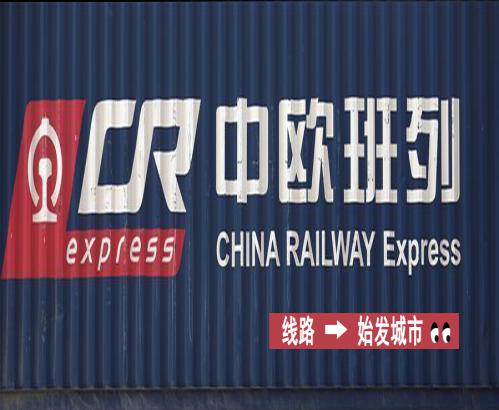Ocean freight market far stronger than in last global recession
Strong demand, government aid, a limited orderbook of container vessels and greater control over capacity have helped carriers emerge from the Covid-19 pandemic far stronger than they did from the 2008 financial crisis. And container lines’ behaviour indicates they are relatively confident for the longer term, according to Alphaliner.
Despite a steep 3.5% decline in world GDP last year, ocean freight volumes were relatively unscathed in 2020 – down just 1.4%, despite a major contraction in the first half of the year. This contrasts with 2009 when global GDP fell only -0.1% but container throughput plummeted -8.2%.
“Twelve months after the collapse of Lehman Bros, the Alphaliner Charter Index languished at just under 40 points – its lowest ever level – while idle tonnage had risen to 10% of the total fleet,” said the analyst.
“The equivalent numbers a year after the COVID-19 outbreak show the reverse, with idle tonnage representing just 1% of the total fleet, and charter rates hitting the highest level in 13 years.”
Consumer spending switch
A switch in spending by consumers from services to products, along with the subsequent surge in e-commerce demand, has been a major factor in record freight rates and logistics bottlenecks over the last 12 months.
“The switch to consumer goods appears confirmed by the mismatch between the IMF’s recorded –9.6% drop in total world trade volumes in 2020 covering both goods and services, to Alphaliner’s –1.4% drop in containerised traffic,” added the analyst.
State stimulus
In addition, notes Alphaliner, massive government stimulus programmes shored up earnings for those negatively impacted by the pandemic, while high volumes of pandemic-related hygiene products also helped carriers.
“Backing it all, governments poured more money into the crisis this time,” it reported. “By June 2020, governments had already allocated USD$10 trillion in stimulus measures to the economic crisis, triple the amount for the entire 2008-09 recession according to a McKinsey & Co report. Meanwhile, IMF figures show the ‘Advanced Economies’ created stimulus packages equal to on average 25% of GDP in 2020. This is even before the recent USD$1.9 trillion package approved in the US.”
Limited supply
Carrier discipline, especially the withdrawal of capacity when demand slumped in the first half of 2020, has been central to the success of carriers. This has been aided by a relatively limited orderbook of newbuilding vessels entering service.
“The orderbook represented 11% of the fleet or 2.6 million TEU at the beginning of 2021,” said Alphaliner.
“By contrast, in 2008, just a few weeks before the Lehman Brothers failure, the orderbook peaked at around seven million TEU, representing a massive 60% of the fleet in the water.
A new normal?
Carriers have come under increasing pressure in China, the US and Europe as shippers have accused them of profiteering, prompting regulators to examine container shortages, rising freight rates and congestion delays.
Analysts have suggested that the gradual relaxation of lockdown measures could see consumer spending switch back to services, taking the heat out of liner markets.
“Pessimists point out, however, that current levels of e-commerce may slump once the pandemic passes as consumers switch back to a service-driven economy, while levels of unemployment are not clear once government support recedes,” said Alphaliner. “Even with a forecast 3.4% increase in container throughput in the current year, this will not bring volumes back up to levels forecast before the pandemic.”
Just as likely, notes the analyst, is that “pent-up demand and the huge savings accumulated by households during the pandemic” could usher in a new wave of buying once the pandemic recedes.
Alphaliner believes carriers are betting the latter outcome will create a sustained profitable environment. “While the world’s largest carrier Maersk claims the market will peak this quarter, lines’ behaviour indicates they are relatively confident for the longer term,” it added.
“Major carriers have been willing to sign ten-year charter deals while newbuilding orders are now piling up.”
- Geodis buys US freight broker Velocity Transport
- Box cargo shifts to bulk vessels to find affordable capacity
- Maersk resumes Yantian calls as nearby ports remain under pressure
- New system launched for first- and last-mile cargo tracking for forwarders
- Egypt agrees to release Ever Given from Suez Canal
- Culina buys Eddie Stobart owner GreenWhiteStar
-
1
达飞轮船公告
CV2航线AS PAMELA轮066W(0IGRTW1NC)航次开航及相关操作时间调整通知...
-
2
达飞轮船公告
SHAKA2航线CMA CGM NILE轮0SSHRW(0SSHRW1MA)航次开航及相关操作时间调整 通知UP1...
-
3
MSK船务公告
关于第26周AE5航线船舶截止时间调整的通知
-
4
东方海外公告
5177- 我司部分航次挂靠码头调整
-
5
印度计划成立百船+班轮公司,3...
据多家印度媒体报道,为重振航运业,印度计划通过数十亿美元的资金支持,成立一家大型...
-
6
国货航将上市,未来三大航和快递...
又一家航空物流企业国货航即将在A股上市,南航物流IPO申请也获受理,加上之前已经上市...
-
7
达飞轮船公告
ACSA1航线NORTHERN DEMOCRAT轮1MHS8E(1MHS8E1MA)航次开航及相关操作时间调整通知...
-
8
东方海外公告
5177- 我司部分航次挂靠码头调整
-
9
达飞轮船公告
SHAKA2航线CMA CGM NILE轮0SSHRW(0SSHRW1MA)航次开航及相关操作时间调整 通知UP1...
-
10
马士基航运公告
关于第25周070航线船舶截止时间调整的通知

